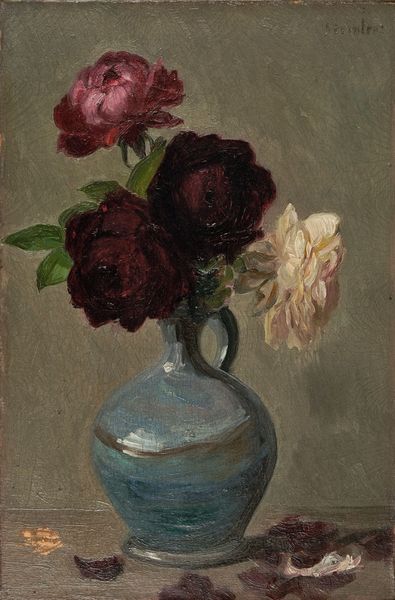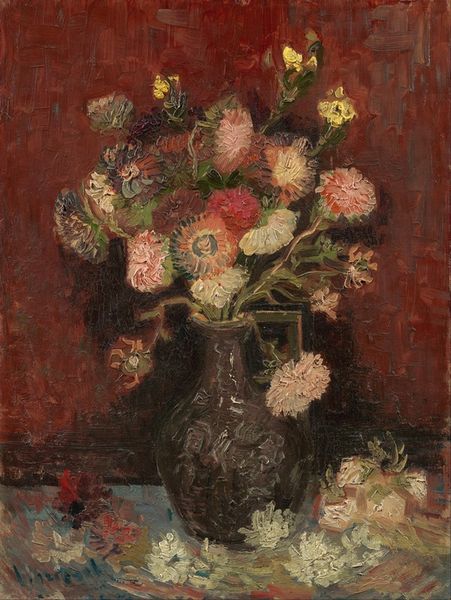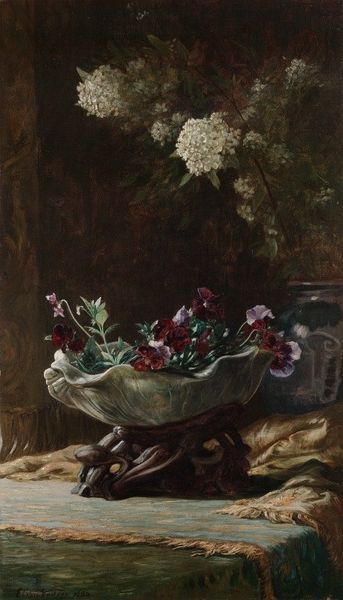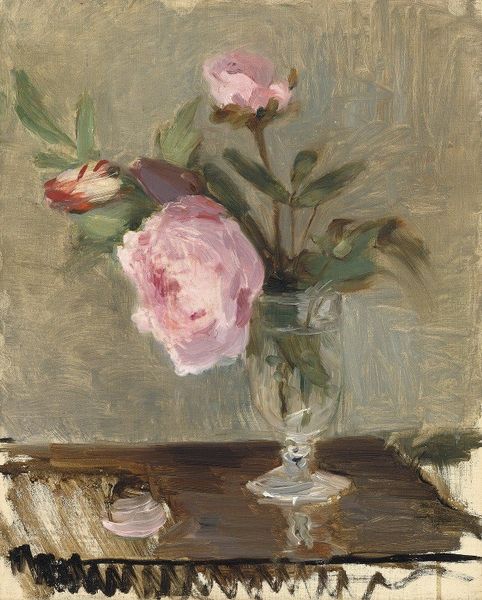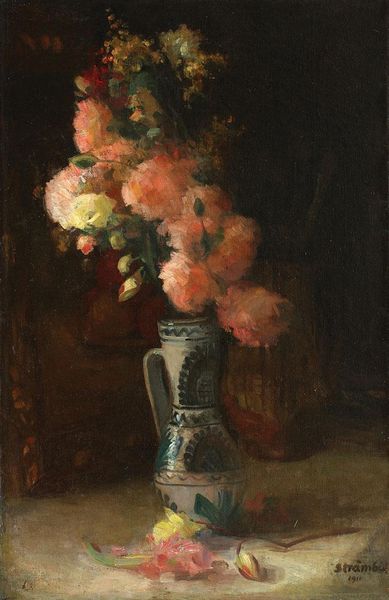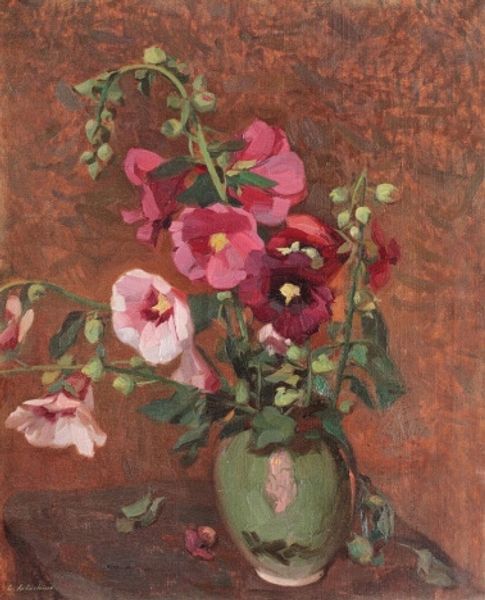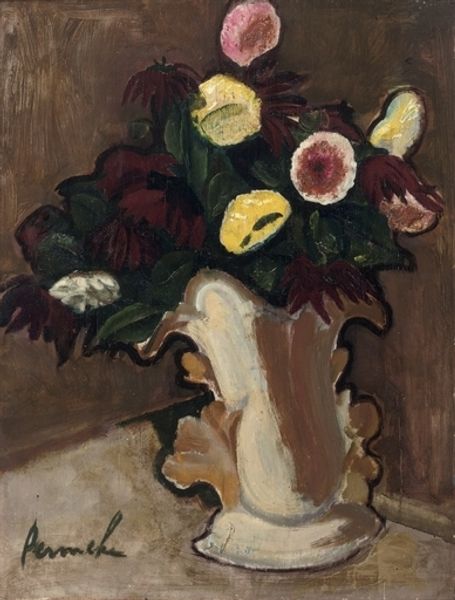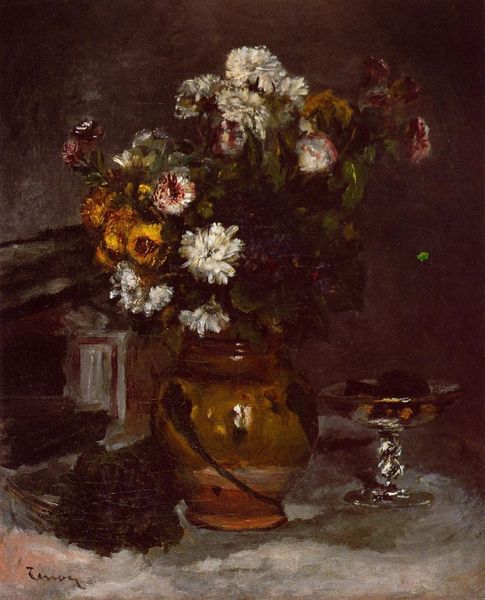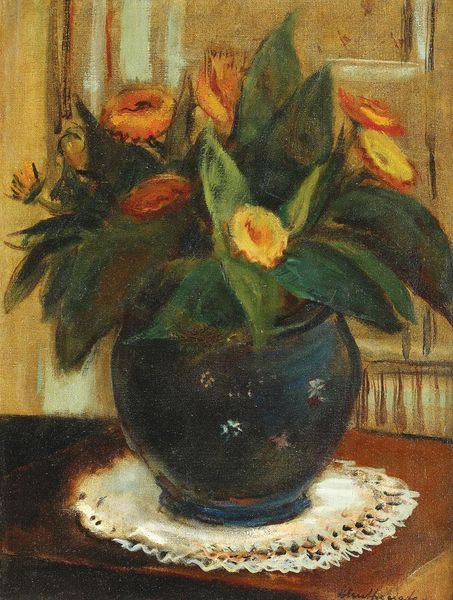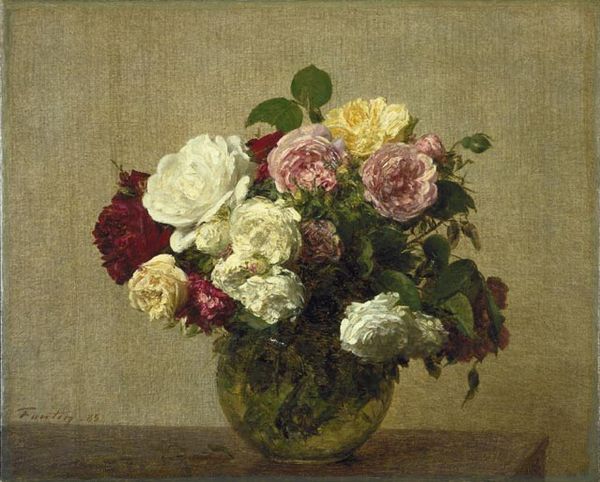
painting, oil-paint, impasto
#
painting
#
oil-paint
#
oil painting
#
impasto
#
modernism
Copyright: Public Domain: Artvee
Curator: Today, we're looking at "Białe róże," or "White Roses," a still life painted by Tadeusz Makowski in 1923. Editor: My first impression is a kind of quiet melancholy. The muted palette and the way the flowers seem to droop suggests a certain fragility. I'm really drawn to how heavy the oil paint looks, as it’s laid on the canvas. Curator: Absolutely. Makowski, deeply impacted by the first World War, consistently engaged themes of vulnerability, and even of fleeting innocence. Remember, Poland regained its independence just a few years before he created this, a poignant return after over a century of political erasure. What were the lives of women artists and labourers after this shift, for instance? This feels interwoven here, perhaps a questioning of beauty and resilience, filtered through a period of national reinvention. Editor: I hadn't considered that in relation to the still life itself. To me, the impasto technique signals more about the physicality of making, and the act of mark making itself. Look at the vase—the paint is thick, almost like layers of clay, emphasizing its own construction. What were the social conditions under which the oil paint itself was being produced at the time? Whose labour and materials enabled him to apply that impasto? It almost elevates the quotidian labor involved in bringing a floral piece to the home or exhibition space. Curator: That's an important connection. Given that Makowski often addressed social issues through allegorical representations, and frequently painted children with a focus on class disparities and child labor, it’s fair to ask: How did the very production and acquisition of beauty itself sustain socioeconomic inequities? Editor: It challenges this romantic perception of domestic space. It shows art itself is always produced. You know, I’d wager those very paint strokes were made with the sweat and labor of many individuals that were unseen. Curator: Exactly! Viewing seemingly serene scenes like this becomes a conscious practice, requiring us to consider labor, resource extraction, and commodity fetishism inherent even in objects presented for pure aesthetic contemplation. Editor: Considering this angle invites a critical reflection on our contemporary moment. Whose labour contributes to the images, even the flowers that adorn our lives, and who reaps the rewards? Curator: Yes. Examining "Białe róże" beyond just its aesthetic beauty allows for an honest inquiry into history, commodity production, and the ongoing dialogue concerning labor exploitation that persists today. Editor: Ultimately, art reminds us that everything is touched by work and production and exchange.
Comments
No comments
Be the first to comment and join the conversation on the ultimate creative platform.

